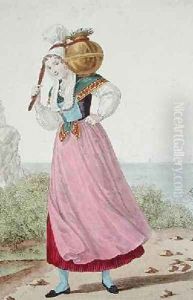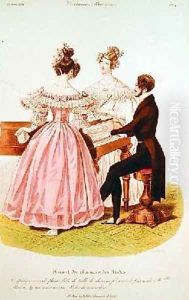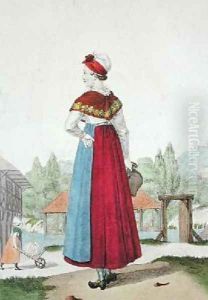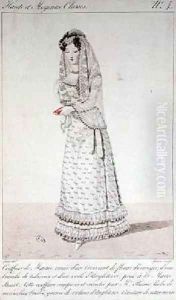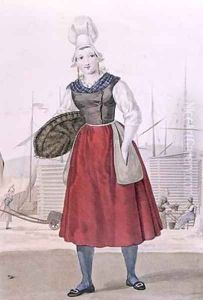Louis-Marie Lante Paintings
Louis-Marie Lante was a French illustrator and fashion designer, known primarily for his detailed engravings of costume designs. Born on December 17, 1789, in Paris, France, Lante came of age during a period of significant social and political upheaval, which included the French Revolution and the subsequent Napoleonic Wars. His work provides valuable insights into the fashion and aesthetics of the early 19th century.
Lante began his career under the tutelage of Horace Vernet, a prominent painter of the time, who was known for his historical scenes and depictions of battles. Under Vernet's guidance, Lante developed a keen eye for detail and composition, which would greatly influence his later work in fashion illustration. He became noted for his depictions of contemporary French fashion, which were characterized by their accuracy and the elegance of his figures.
Throughout his career, Lante produced a series of fashion plates, which were published in various magazines and journals, becoming an important source for understanding the evolution of European fashion. These plates were often hand-colored and served not only as a reflection of current trends but also as inspiration for dressmakers and their affluent clients. One of Lante's most significant works is the 'Costumes des femmes du Pays de Caux,' which provided a detailed look at the regional costumes of the women from the Pays de Caux area in Normandy.
Lante's work extended beyond fashion illustration. He also created designs for textiles, furniture, and decorations, which contributed to the aesthetic movement known as the Empire style, closely associated with the reign of Napoleon I. The Empire style was marked by its grandeur and alignment with the classical revival in art and architecture, which was part of a broader cultural movement known as Neoclassicism.
Louis-Marie Lante's contributions to the world of fashion and design were significant during his lifetime. His illustrations remain a valuable resource for historians and fashion designers alike, offering a window into the styles and sensibilities of his era. He passed away on October 14, 1871, leaving behind a rich legacy of artistic works that continue to be studied and admired for their historical value and beauty.
